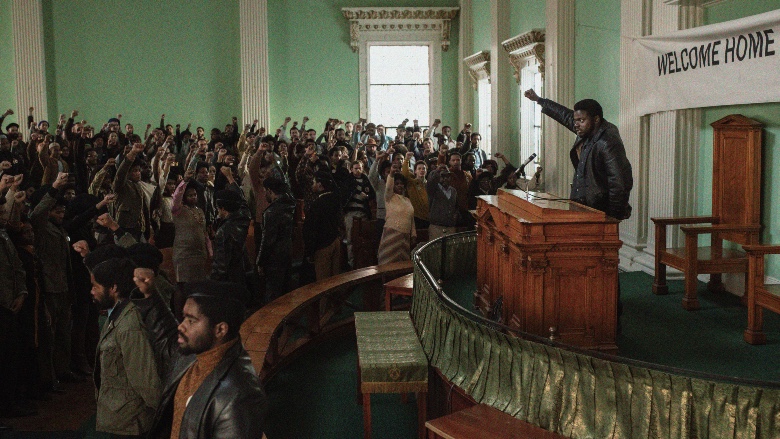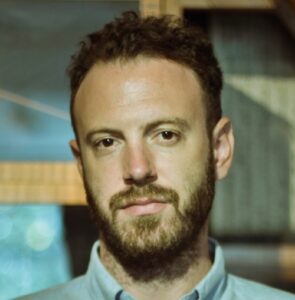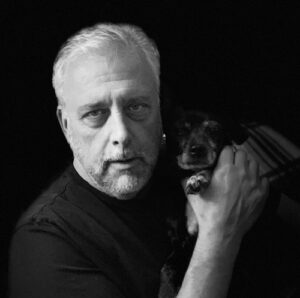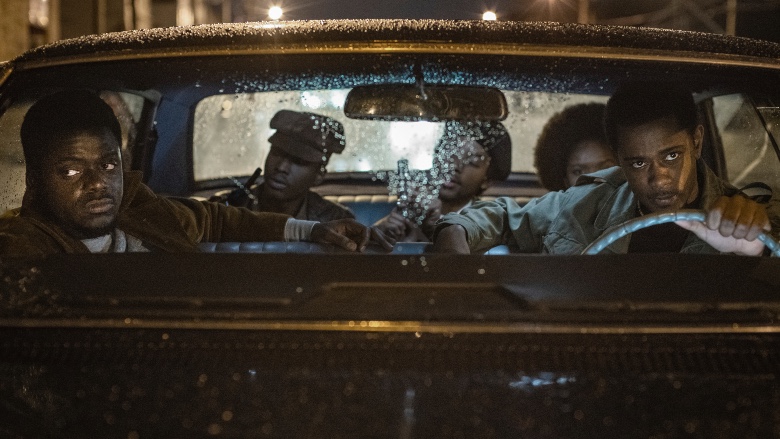
Fred Hampton was only 21 years old when he was assassinated by the FBI in 1969. In the Warner Bros Pictures release Judas and the Black Messiah, director Shaka King revisits the events leading up to Hampton’s (played by Daniel Kaluuya) death, as well as his relationship with FBI informant William O’Neil (LaKeith Stanfield).
Based on true events, the story unfolds over a dense, complicated landscape of bars, tenements, courtrooms, prison, gang clubhouses, churches, and suburbia. Music and sound help tie the script together, as Supervising Sound Editor Rich Bologna and Re-Recording Mixer Skip Lievsay explained to Below the Line in a Zoom conference call from Warner Bros. headquarters in New York City.
“The music is kind of one plane of the filmmaker’s concept,” Lievsay said. “Scorsese’s a perfect example, the way he uses different types of music that come from different sources. The music cues impact the story, they reflect off events, they can push the whole story in a new direction. You can use music to guide the audience, push them in a way. Remind them where they are, what’s happening, what the time period is.”
“I’m glad that the music is getting such a good response, because it was super-important to Shaka,” added Bologna. “I think he told me at one point he brought the song ‘The Inflated Tear’ with him to pitch meetings. It was so important to him that he actually played it for studio execs.
Written by Rahsaan Roland Kirk, “The Inflated Tear” bookends the movie, including a newly recorded version by Craig Harris, co-composer of the score with Mark Isham and coincidentally Shaka King’s uncle. Lievsay also pointed out “Fight for You,” a new song performed by H.E.R. which is heard in the closing credits.

“That was probably the last thing they put in the movie,” Bologna said. “Skip and I were both worrying that we weren’t going to like it, and when it came on it was perfect.”
Bologna began working on Judas and the Black Messiah in March 2020, just as Covid-19 lockdowns began. When the original August release date was postponed, he had more time to collaborate with King.
“We knew each other from before, so we already had a rapport,” Bologna remembered. “Technically we had some hurdles to overcome, we stayed up late many times, which I think was natural for Shaka. It was annoying in the sense that we had to do a lot of QuickTime stuff. Things that would take three seconds took three hours.”
Bologna started supplying sound well before the picture was locked. “At the end of the day, it’s really nice to feel like you’re a filmmaker and not just a technician,” he noted. “The process came down to giving them a lot early so there weren’t surprises. The picture team had a good, robust first layer of stuff. Then maybe three-quarters of the way through, after we had a first layer of paint, we could start taking stuff out.”
Libraries provided material for the film’s shootouts — “I don’t know why you would ever want to record another gun ever again,” Bologna said — but Judas still required custom sounds. He singled out Sound Effects Editor Larry Zipf for his field recordings of the period cars that appear in the story.
Archival footage brought about a different set of problems. Judas opens with ten clips of news footage that introduce the characters but also provide a cultural context for the narrative.

“Generally the sound that comes with archival footage is pretty poor,” Lievsay said. “The microphones they used are similar, but the rest of the technology has changed so much from the quarter-inch Nagra that used to be a standard. News footage in particular is pretty bad. A lot of what you’re doing is just trying to make it a little more clear, a little less murky. It required a lot of manipulation and filtering to get that stuff to seem uniform and smooth.”
Bolgona felt the raw, rough sound in the opening matched stylistically with the period. “There was a version that didn’t start with archival footage. Shaka went back and forth and ended up landing where the film currently stands. Now it brings you right into that era of the Panthers in the ‘60s.”
But Lievsay didn’t want to match a “period” sound. “Something that I find to be kind of not a good path is to try to make stuff sound old,” he added. “It’s okay to make old stuff sound new, but to make new stuff try to sound old just for the sake of matching, I find that to be kind of a wrong direction. Whenever you’re trying to chase what you think a period sounded like, you have to remember that the world has always sounded super high fidelity, super clear. It’s just that we haven’t been able to reproduce it until now.”
“Skip and I have an ongoing debate about good- or bad-sounding records,” Bologna countered. “I think the only bottom line is — if the performance is good, it’s all good. For us, it’s really about staying out of the way of the performers. We can embellish, but the performance is what matters.”
An especially thrilling scene in Judas is a speech Hampton gives at a rally after being released from prison. The camera follows him into a packed hall, where he brings the audience to their feet with an incendiary speech.
“Most of that sound came from location,” Lievsay said. “A lot of it is simultaneous. Those are real performances with real crowd reactions. Hats off to [Sound Mixer] Marlowe Taylor, and also to Daniel for his performance. When we played that sequence back for Shaka, it was a charged moment. We got to the end and he was like, ‘Wow.'”
As Lievsay explained, the sound department could count on two sources for almost every line of dialogue in the movie, usually from a boom or lavelier microphone. For the rally sequence, they also used recordings of the audience. Bolgona also pointed out that Lievsay constructed a percussion track for the sequence.
“We had about a minute of a location recording of congas and bongos, and there were four times in the sequence where it needed to play,” Lievsay said. “You can hear a little bit of it in places and it’s easy to track and take this one piece and apply it in time.”

In addition, Lievsay created a reverb track to add to the mix. “I can cut it, I can pan it, I can mute sections,” he said. “It’s like another source. So if you have fairly consistent sound up front, room tone, reactions, you can splash a little extra reverb into the surrounds, make the angles change more dramatically. That’s all you really need to make a scene like that pop.”
When it came time to mix in November, “Shaka was there the whole time,” Lievsay said. “He was so jazzed by what we were doing. Gracious, kind, giving.”
“He really trusted me a lot,” Bologna agreed. “For the most part we really synched. I think he really enjoyed the sound process. He let us run with it, gave us a lot of room to play with.”
Even before the film was picked up to stream on HBO Max, Bologna sensed that, “I wanted it to sound good in a home theater environment because I felt that was the writing on the wall. So I spent more time than I normally would have mastering for that playback system.
“That said, we’ve always tried to make the biggest version sound as good as it can be. 70mm six-track, Dolby Stereo, whatever: every subsequent version, including home theater, deserves to be as big as it can be. And Shaka, to his credit, wanted to hear what we call the ‘near-field mix.’ He watched that whole pass with me. I think we both were probably more careful on this film than most to make it sound good for the home environment.”
Judas and the Black Messiah can now be seen (and heard) in select theaters and streaming on HBO Max. You can watch a clip from the film and hear the song “Fight for You” by H.E.R. below. You can also read our previous interviews with Editor Kristan Sprague, Cinematographer Sean Bobbitt and our review.
All pictures courtesy Warner Bros. Pictures, except where noted.





